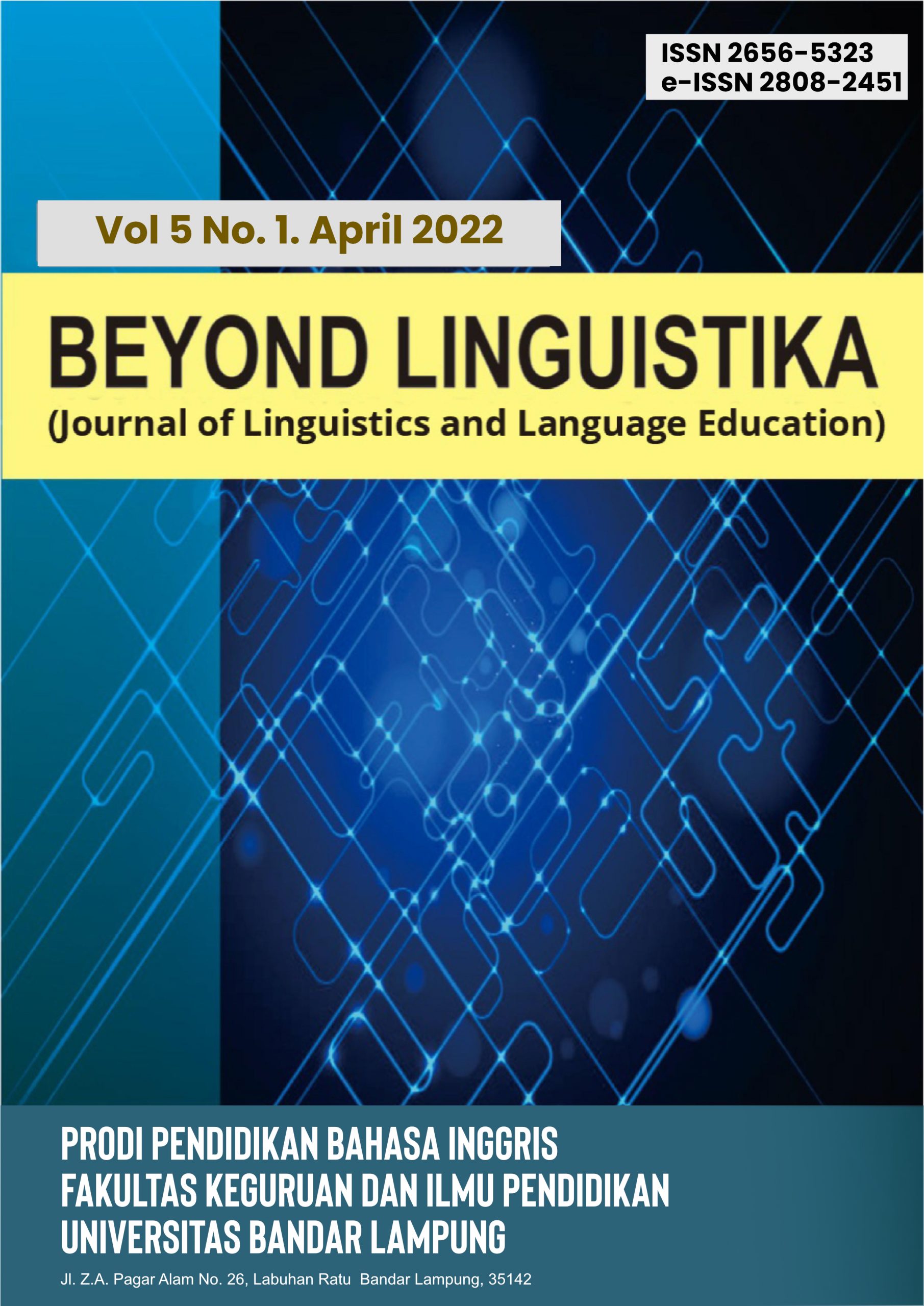SEMANTIC CHANGES USED BY MILLENNIAL GENERATION ON INSTAGRAM
Abstract
Keywords
Full Text:
PDFReferences
Henning, J. (1995). Model
Languages. Retrieved from
www.ConlangProfieldsatLangma
ker.com.
Herring, S., & Kapidzic, S. (2015).
Teens, Gender, and SelfPresentation in social media. In
International Encyclopedia of the
Social & Behavioral Sciences (pp.
-152). doi: 10.1016/B978-0-
-097086-8.64108-9
Hollmann, W. (2009). Semantic
Change. London: Methuen.
Hu, Y., Manikonda, L., &
Kambhampati, S. (2014). What
We Instagram: A First Analysis of
Instagram Photo Content and User
Types. Eighth International AAA1
Conference on Weblogs and social
media.
JunRivai. (2013, Juni 20). [Oooh]
Asal Usul Bahasa Gaul dan
Istilah-istilah Lainnya. Retrieved
from https://www.kaskus.co.id/:
https://www.kaskus.co.id/thread/5
c2d60e1ed7197a27000000/oooh
-asal-usul-bahasa-gaul-danistilah-istilah-lainnya/
Kadhim, L. A. (2012). THE
SEMANTIC CHANGE IN
ENGLISH AND ARABIC: A
CONTRASTIVE STUDY.
Journal of Al-Qadisiya University,
(1), 7-23. Retrieved from
https://www.researchgate.net/publ
ication/315375477_THE_SEMA
NTIC_CHANGE_IN_ENGLISH
_AND_ARABIC_A_CONTRASVol. 4 No. 1 April 2021 ISSN 2656-5323
TIVE_STUDY/link/58cd814ba6f
dcc5cccbbe3ca/download
Lyons, J. (1981). Language and
Linguistics. Cambridge:
Cambridge University Press.
Putri, S. A. (2018, April). Wacana
Islam Populer dan Kelahiran Ustaz
Medsos di Ruang Publik Era
Digital. Jurnal Komunikasi dan
Kajian Media, 2(1), 87-114.
Seargeant, P., & Tagg, C. (2014).
The Language of social media.
England: Palgrave Macmillan.
Sheard, J. (1966). The words of
English. New York: Norton.
Stockwell, R., & Minkova, D.
(2001). English Words: History
and Structure. Cambridge:
Cambridge University Press.
Trask, R. (1996). Historical
Linguistics. London: Arnold.
Traugott, E. C. (1982). Some
Semantic –Pragmatic Aspects of
Grammaticalization. Amsterdam:
John Benjamins.
Wahana, H. D. (2015). Pengaruh
Nilai-Nilai Budaya Generasi
Millennial Dan Budaya Sekolah
Terhadap Ketahanan Individu
(Studi Di SMA Negeri 39,
Cijantung, Jakarta). Jurnal
Ketahanan Nasional, 21(1), 14-22.
doi:https://doi.org/10.22146/jkn.6
DOI: http://dx.doi.org/10.36448/bl.v4i1.1981
Refbacks
- There are currently no refbacks.















